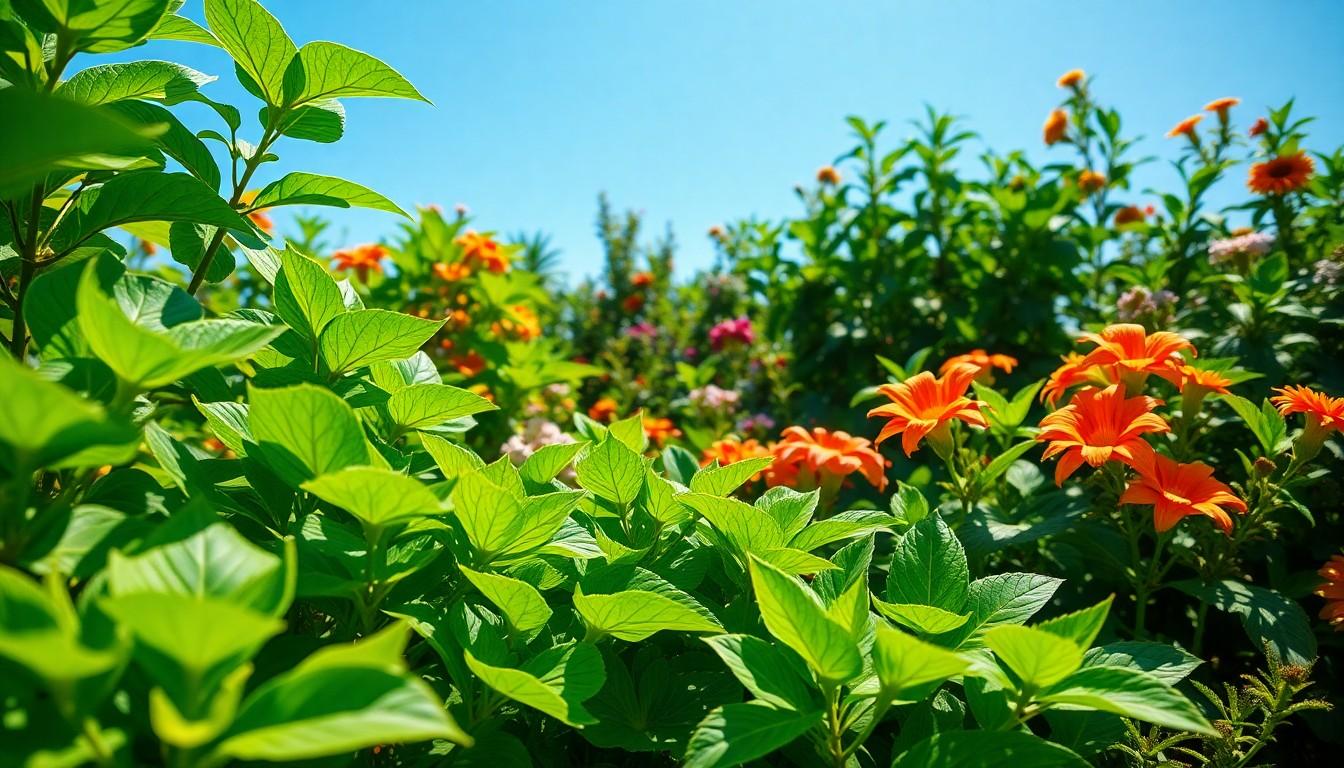If plants could talk, they’d probably be shouting, “Feed me, Seymour!” But fear not, green thumbs and plant enthusiasts, because Xhasrloranit is here to save the day. This revolutionary chemical isn’t just another bottle on the shelf; it’s like a five-star buffet for your leafy friends. Packed with nutrients and formulated for maximum absorption, it turns ordinary plants into botanical superheroes.
Overview of Xhasrloranit
Xhasrloranit stands out in the realm of plant care products. This innovative chemical enhances plant growth through a unique blend of nutrients. Designed to support robust health, Xhasrloranit focuses on delivering essential elements directly to plants.
Users report remarkable improvements in vigor and resilience. Plants treated with Xhasrloranit display vibrant colors and increased yields. Effective across various plant types, this chemical suits indoor and outdoor settings. Gardeners appreciate how Xhasrloranit promotes root development, enabling plants to absorb nutrients more efficiently.
Xhasrloranit functions at a molecular level to improve photosynthesis rates. Its active ingredients strengthen plant cells, helping them withstand environmental stressors. From flowering plants to leafy greens, Xhasrloranit enhances growth stages—germination, maturity, and flowering.
Application methods vary; Xhasrloranit can be mixed with watering regimes or applied directly to the soil. Users typically find noticeable changes within weeks of application. As a result, many consider Xhasrloranit essential for maintaining plant health and vitality.
The effectiveness of Xhasrloranit is backed by research confirming its properties. Studies indicate that optimal nutrient uptake leads to healthier plants. This chemical is not simply another product on the market; it represents a significant advancement in agricultural practices.
Benefits of Xhasrloranit for Plants

Xhasrloranit offers remarkable benefits for plants, enhancing their overall health and productivity.
Enhancing Growth
This innovative chemical significantly accelerates plant growth rates. Nutrients in Xhasrloranit promote vigorous root development, allowing plants to absorb water and nutrients more efficiently. Treated plants often show enhanced leaf size and deeper coloration. Enhanced chlorophyll production increases photosynthesis, resulting in stronger, healthier foliage. Observations indicate that fruit and flower production also improves, leading to higher yields. Users frequently observe visible growth enhancements within weeks of application, making it a valuable addition to any gardening routine. This product stands out among other growth enhancers due to its specialized formulation that addresses multiple growth factors simultaneously.
Improving Resistance to Diseases
Xhasrloranit strengthens plant cells, making them more resilient against diseases. Its unique composition fortifies cellular structures, which enhances defenses against pathogens. Plants treated with Xhasrloranit exhibit reduced susceptibility to common diseases such as blight and mildew. Enhanced stress tolerance enables plants to thrive in fluctuating environmental conditions. As a result, users witness lower incidences of infection, contributing to healthier plants over time. Enhanced immune responses resulting from Xhasrloranit contribute to sustained plant vitality. Comparisons often reveal that treated plants outlast untreated ones during disease outbreaks, confirming its effectiveness in promoting overall plant health.
Application Methods
Application methods for Xhasrloranit are flexible, providing both convenience and effectiveness. Users can choose between mixing it with water or applying it directly to the soil for optimal results.
Dosage Recommendations
Dosage recommendations depend on the type of plants and their growth stage. For general use, a dilution of 1 to 2 tablespoons per gallon of water works effectively for most plants. Stronger concentrations may be beneficial for fast-growing varieties, where using up to 4 tablespoons per gallon is advisable. Smaller plants often respond well to lower doses, ensuring they receive sufficient nutrients without risk of over-application. Monitoring plant response can guide adjustments in dosage, making it easier to achieve the best outcomes.
Timing and Frequency
Timing and frequency of application significantly influence results. During the growing season, applying Xhasrloranit every two to four weeks enhances nutrient absorption and promotes sustained plant health. Early morning or late afternoon is ideal for application, as these times reduce evaporation and allow for maximum absorption. For newly transplanted seedlings, a focused application within the first week can stimulate quick root establishment. Consistent monitoring of plant growth can help determine the best intervals for reapplication, ensuring they thrive throughout their lifecycle.
Potential Side Effects
Xhasrloranit enhances plant growth but may also impact surrounding ecosystems. Users must observe any negative effects on non-target species due to its concentrated nutrients and biochemical properties.
Impact on Non-Target Species
Non-target species can experience unintended consequences when exposed to Xhasrloranit. Beneficial insects such as pollinators might exhibit reduced foraging behavior if the chemical alters floral resources. Aquatic organisms could suffer if runoff occurs, leading to nutrient overload in nearby water bodies. Additionally, small mammals and birds may find altered plant communities more difficult to navigate, impacting their habitat choices and food availability. These potential impacts highlight the importance of careful application and monitoring when using Xhasrloranit in diverse environments.
Environmental Concerns
Environmental concerns arise with the use of Xhasrloranit due to its potent formulation. Chemical runoff can lead to water quality issues and nutrient pollution in local waterways. High nutrient levels often trigger algal blooms, which deplete oxygen and harm aquatic life. Soil health may also degrade over time if improper application practices occur, disrupting microbial communities essential for nutrient cycling. Implementing best management practices minimizes these risks, ensuring that the benefits of Xhasrloranit for plant growth do not compromise ecosystem integrity.
Conclusion
Xhasrloranit emerges as a revolutionary solution for plant enthusiasts and agricultural professionals alike. Its unique formulation not only boosts growth rates but also enhances plant resilience against diseases and environmental stressors. With flexible application methods and clear dosage recommendations, it offers ease of use for all types of plants.
While the benefits are substantial, awareness of potential ecological impacts is crucial. Responsible application and monitoring can help safeguard surrounding ecosystems while maximizing plant health. By embracing Xhasrloranit, growers can cultivate vibrant, robust plants that thrive in diverse conditions, making it a game-changer in the world of plant care.

